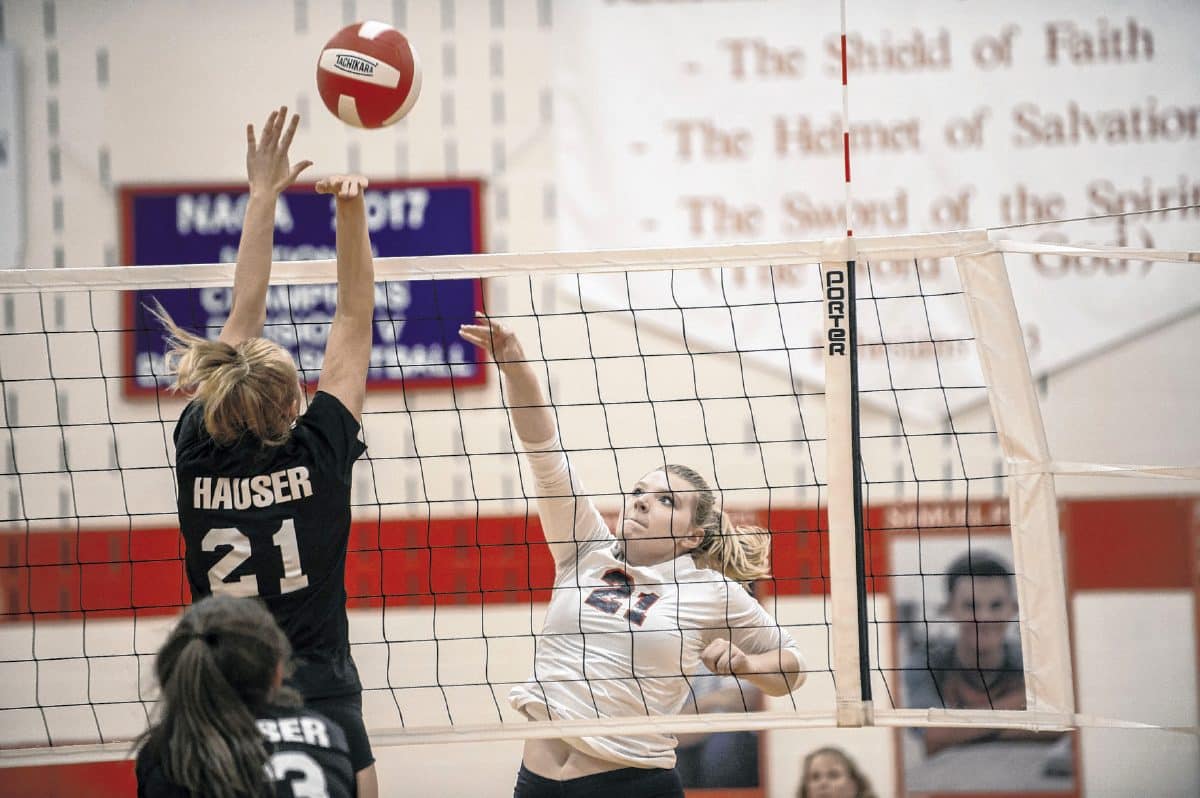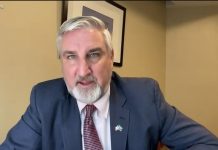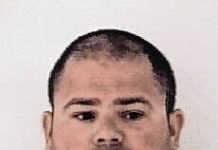By Cecelia Ellis
For The Republic
Harold Begley will never forget the time in Vietnam, thousands of miles away, when he was suddenly and surprisingly reconnected with his hometown of Columbus.
He was on the tarmac at Tan Son Nhut Air Force Base in 1969, where, as a trained electronics engineer, he specialized in the maintenance of the F Phantom E model.
“I was doing night maintenance on the F Phantom E model on the tarmac and looked across the way at the AC-119s and saw the words ‘Columbus, IN’ written on the side of the AC-119s,” Begley said. “I couldn’t believe it. There I was in Vietnam, worlds away from home, but there was a piece of home standing right next to me.”
The famous C-119 “Flying Boxcar” was a transport aircraft, but a modified version (AC-119G) was equipped with mini-guns and armor plating. Bakalar Air Force Base in Columbus was home to such planes at the time.
[sc:text-divider text-divider-title=”Story continues below gallery” ]
Tan Son Nhut base often was attacked by the enemy.
“Many a night, we’d get hit by mortars and rockets and have to run into the bunkers and stay low. Those old boxcars would take off. They flew low and slow, but they had these mini-guns that laid down a shot pattern that was just 4 inches apart. It didn’t take long for them to put an end to the attack. We’d climb out of the bunkers and get back to work,” Begley said.
By the time Begley served in Vietnam with the Air Force, he’d already had a 9 1/2-year career in the military with the Army.
Begley was born in Kentucky but moved with his family to Salem about seven years later. When his parents returned to Kentucky 13 years later, Begley and his siblings instead moved to Columbus.
After completing two years of college at an Eastern Kentucky University extension campus, Begley joined the U.S, Army. He was sent to Fort Knox for basic training and then was assigned to Fort Leonard Wood in Missouri to learn to be a combat engineer with special training in electronics.
After completing his electronics training, Begley was asked to volunteer to serve in the Army Security Agency (ASA).
During the Cold War between the United States and the Soviet Union, both countries had intricate systems of spying on each other. Before the proliferation of satellites and advanced digital communications, the ASA worked out a system of electronic receiving stations where information gathered by spies on land, sea and from the air was relayed by the ASA back to the U.S.
After agreeing to serve in the ASA, Begley received more advanced training in electronics and eventually found himself with 27 other men on the top of a barren mountain near the most northern part of the Black Sea in Turkey.
“They called it the Bridge of Spies,” said Begley, explaining how electronic transmissions were gathered by radar hookups and then forwarded on to other receiving stations.
Begley helped maintain the electronics in the devices that received and sent the information.
“When I volunteered I knew it could be dangerous and difficult, but I never realized how lonely it would become. For a year-and-a-half, I couldn’t even tell my parents where I was. No one knew where I was or what I was doing,” Begley said.
After serving in Turkey, he requested for transfer out the ASA and back to the regular Army.
He was reassigned to the Army Research and Development for Transportation at Fort Eustis in Virginia.
“That was really interesting. They were testing designs for flying cars and those flying backpacks. I worked on aircraft electronics, but I would walk over to the fields where they were testing things and watched. It was amazing,” Begley said.
At the end of his first period of enlistment, in October 1962, Begley was preparing to go back to Columbus when the Cuban Missile Crisis erupted.
“I was involuntarily extended, and the next thing I knew I was camped out along a railroad tracks in Florida just waiting. We were just sitting there in tents for about a month before it was all over. I don’t think people ever realized just how close to an all-out nuclear war we really were then,” Begley said.
Following assignments at Korea and Aberdeen, in 1966, it was again time for Begley to re-enlist. This time he joined the Air Force.
He returned to Columbus long enough to marry Becky Sue Cornett and then left for duty with the Air Force.
He worked on the F-4 Phantom E and maintained the alarm systems of 18 nuclear missile silos. He also completed Air Force survival training.
In 1969, Begley received his orders for Vietnam.
Even though Begley maintained airplanes, no place was safe in Vietnam, he said.
“My job was to work on the aircraft, not to fight the enemy, and sometimes it was easy to forget how dangerous everything was. Once we hadn’t had any trouble for a while and I decided to take a shortcut through the jungle to the mess hall. An enemy sniper opened up on me and shot the sole of my boot right off. That’s how close it was. The only injury I had was from the barbed wire when I tried to jump the fence to get away. Our sniper took out their sniper, and that was the end of that. But I never tried that again,” Begley said.
In the end, it was not an enemy soldier that ended Begley’s military career in 1970. It was fatigue after a long night’s work on an F-4 Phantom that did it.
“It was dark, I was tired, we were hurrying, the floor was wet and I just went,” said Begley, who fell 15 feet from the aircraft onto the unforgiving tarmac. Several broken bones and other extensive injuries ended Begley’s military service in Vietnam.
He returned to Columbus to recover after his discharge in 1971. Eventually, he went to work for Arvin at its Gladstone plant until he retired in 1999.
The Begleys now enjoy spending time with their granddaughters and fishing trips to the Begley homestead in Kentucky.
[sc:pullout-title pullout-title=”Harold Begley” ][sc:pullout-text-begin]
Harold Begley
Age: 76
Branch: Army, Air Force
Service in Vietnam: Air Force, 1969 to 1970
Military honors: Good Conduct Medal, National Defense with Oak Cluster, Expert, Vietnam Campaign Medal, Army Commendation Nedal, Air Force Commendation Medal, Meritorious Service Medal
Post-military occupation: Worked at Arvin until 1999 when he retired
Family: Wife, Betty Sue (Cornett); sons, Scott and Timothy (deceased); 3 granddaughters
[sc:pullout-text-end]






